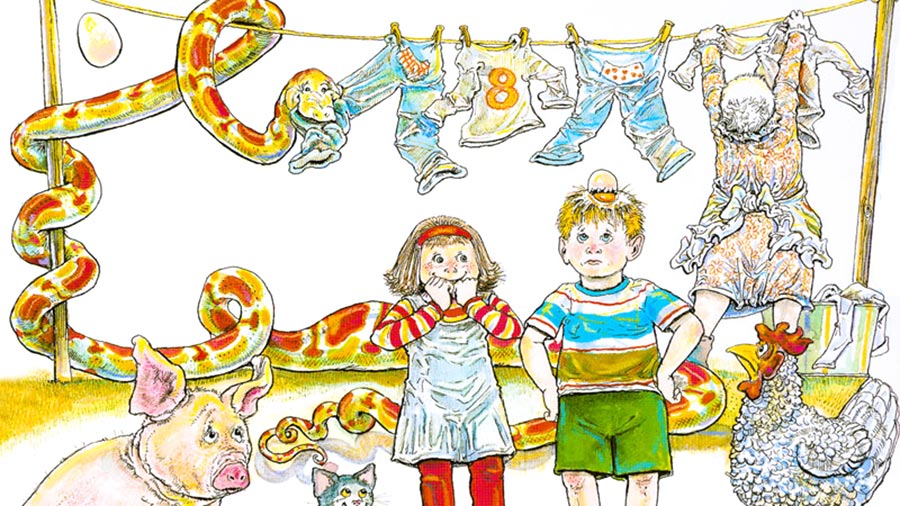The picture book has been my passion for over 40 years. It is a unique and complex genre that most people do not understand. Many think it is easy – just some cute little “bunny books.” Others think it is simple, that anyone can write a picture book. One person even asked me if I were practicing to write a novel someday!
Let me give you my take on the “Picture Book” by separating the two words.
Picture: Visual
Before humans had words, before we had language, we communicated with pictures, scratched in dirt, painted on cave walls. Visual art is nonverbal. Think of the emotional power in Rembrandt’s self-portraits or the war-torn anguish of Picasso’s Guernica. No words needed. All very young children can “read” pictures. Even babies will look at a picture for a long time. It is the very beginning of learning, of expanding their world.
Book: Verbal
In a picture book, the story is told in the pictures as well as the words. If I read a picture book over the radio, and you can’t see the pictures, then you won’t understand the story. Just as we read left to right, the pictures also travel across the page from left to right, organically leading the young reader to turn the page, drawing them into the book. A true picture book is a perfect marriage between the art and the text, the visual and the verbal. The importance of the picture book genre cannot be denied. It is the vital link in a young child’s learning process from visual to verbal. It is the very beginning of passing on language.
If we – the writers and illustrators of picture books – do not do our creative jobs well, then there won’t be any future book lovers to read such classics as Tom Sawyer, Little Women, To Kill a Mockingbird, or even Ulysses or War and Peace! And to that end – the creation of future book lovers – here are five important things I’ve learned over the years while creating picture books. I hope you find them helpful in the creation of your own picture book.

1) Capture Your First Energy
When you strike a match there is that initial spark. The spark lights the match, the match lights the candle, the candle lights the room. This is how I think of that first spark of an idea. I call it “first energy.” It is imperative that first energy be jotted down quickly, exactly how it came to you. It might be a word or two or even a whole sentence. It could just be a character’s name or a visual that has suddenly appeared. Don’t delay. Write it down or sketch it, or you will never remember exactly how it went. I’ve found that first energy always rings true and often I will come back to it when writing a picture book. Sometimes it ends up in an opening sentence or the last line. Don’t lose that first energy. It’s a golden nugget.
2) Winnow Your Words
When writing picture books (and other writings), I’ve developed a practice I call “winnowing.” Winnowing is when you toss grain and chaff up into the air. The wind blows away the chaff and the grain falls back into the basket. So it is with writing. Often we are so close to our writing, reading it over and over, that it gets too wordy and bogged down. Since a picture book has few words and is generally short, every word has to count – in order to move the story forward. Winnowing helps keep it on track. What I do is put the story away for a time, then come back to it with fresh eyes, pretending I didn’t write it. I lightly read it, almost skimming it, and I highlight what stands out. The rest I don’t. When I’m finished, hopefully the chaff has blown away and the grain, or the essence of my story, is left on the page. Remember, cream always rises to the top.
3) Connect Your Voice
Voice is tricky to define. It’s the sort of thing in a piece of writing that you know when it is there, and you know when it is not. I believe that in a picture book, no matter how short, something has to connect with you, the writer. It could be your quirky sense of humor or something that touched your heart. It could be from your own childhood or something your own children or grandchildren said that struck your fancy. It could be something that you just love, something as unassuming as a pumpkin or a pancake. If there is something in your picture book that is meaningful to you, that connects with you, then that makes it authentic to you. And in that authenticity, in that originality, therein lies voice in your writing.
4) Remember the Innocence of Your Audience
It’s important to know and respect your audience. Young readers and listeners are innocent. They are little sponges, soaking up everything. Their minds are wide open. Unlike adults, they have not developed a built-in filter to know what is good or not. Therefore, it is imperative that you give them your very best effort.
Also, kids are innocently honest. If they don’t like something, they will simply drop it or walk away. I’ve heard that the cover and title of a children’s book has only five seconds – that’s one, two, three, four, five – before a young reader will either pick it up or leave it be. I once got a letter from a little girl who loved my book, The Day Jimmy’s Boa Ate the Wash. She loved it so much that she slept with it under her pillow. But there was a P.S. at the bottom, which read, “Mrs. Noble, could you please make your next book smaller because I’m getting a stiff neck.” Now that’s honesty! It was the best fan letter I ever got!

Cover detail from The Day Jimmy’s Boa Ate the Wash, 1980, by Trinka Hakes Noble, illustrated by Steven Kellogg.
5) Find a ‘TFR’
“TFR” stands for “trusted first reader”, a term I use for that very special person whom you trust with an early draft of your picture book manuscript or any piece of writing. An early draft is like a seedling, just poking its stem and leaves above the dirt, reaching toward the sunlight. It needs watering and tending as it grows, not to be pulled up by its roots. At a certain point in writing a manuscript, a TFR can be helpful, but hard to come by. I’ve only had a few over my long career. So I have become my own TFR by letting my child within – the little kid that is still there – read my story and if she smiles, laughs or tears up, if she likes even a little bit of it, then I keep on going. So choose your TFR wisely. Make sure you can trust your first reader, even if it is yourself.
So, don’t ever let anyone tell you that a picture book is easy! You and I know differently.



 Trinka Noble
Trinka Noble 